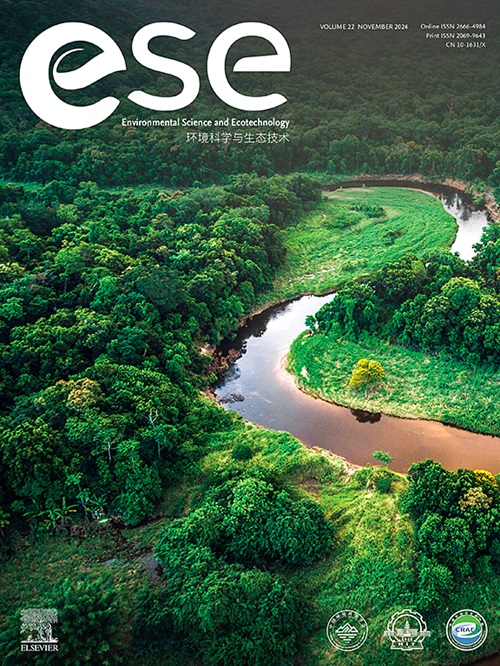Distinct ARG profiles associated with class 1 integrons in municipal and industrial wastewater treatment plants
IF 14.3
1区 环境科学与生态学
Q1 ENVIRONMENTAL SCIENCES
引用次数: 0
Abstract
Class 1 integrons facilitate horizontal gene transfer, significantly influencing antibiotic resistance gene (ARG) dissemination within microbial communities. Wastewater treatment plants (WWTPs) are critical reservoirs of ARGs and integrons, yet the integron-mediated dynamics of ARG transfer across different WWTP types remain poorly understood. Here we show distinct ARG profiles associated with class 1 integrons in municipal and industrial WWTPs using a novel approach combining nested-like high-throughput qPCR and PacBio sequencing. Although industrial WWTPs contained higher absolute integron abundances, their relative ARG content was lower (1.27 × 107–9.59 × 107 copies/ng integron) compared to municipal WWTPs (3.72 × 107–1.98 × 108 copies/ng integron). Of the 132,084 coding sequences detected from integrons, 56.8 % encoded antibiotic resistance, with industrial plants showing lower ARG proportions, reduced ARG array diversity, and greater incorporation of non-ARG sequences. These findings suggest industrial WWTP integrons integrate a broader array of exogenous genes, reflecting adaptation to complex wastewater compositions. This work enhances our understanding of integron-driven ARG dynamics in wastewater and offers a robust strategy for environmental integron analysis.

在城市和工业废水处理厂中,与1类整合子相关的不同ARG剖面
1类整合子促进水平基因转移,显著影响抗生素耐药基因(ARG)在微生物群落中的传播。污水处理厂(WWTPs)是ARG和整合子的关键储存库,然而整合子介导的ARG在不同类型污水处理厂之间转移的动力学尚不清楚。在这里,我们使用一种结合嵌套式高通量qPCR和PacBio测序的新方法,在市政和工业污水处理厂中显示了与1类整合子相关的不同ARG谱。虽然工业污水处理厂的绝对整合子丰度较高,但其相对ARG含量(1.27 × 107 - 9.59 × 107拷贝/ng整合子)低于市政污水处理厂(3.72 × 107 - 1.98 × 108拷贝/ng整合子)。在从整合子中检测到的132,084个编码序列中,56.8%编码了抗生素耐药性,工业植物显示出较低的ARG比例,降低了ARG阵列多样性,并且更多地结合了非ARG序列。这些发现表明工业污水处理整合子整合了更广泛的外源基因,反映了对复杂废水成分的适应。这项工作增强了我们对废水中整合子驱动的ARG动力学的理解,并为环境整合子分析提供了一个强大的策略。
本文章由计算机程序翻译,如有差异,请以英文原文为准。
求助全文
约1分钟内获得全文
求助全文
来源期刊

Environmental Science and Ecotechnology
Multiple-
CiteScore
20.40
自引率
6.30%
发文量
11
审稿时长
18 days
期刊介绍:
Environmental Science & Ecotechnology (ESE) is an international, open-access journal publishing original research in environmental science, engineering, ecotechnology, and related fields. Authors publishing in ESE can immediately, permanently, and freely share their work. They have license options and retain copyright. Published by Elsevier, ESE is co-organized by the Chinese Society for Environmental Sciences, Harbin Institute of Technology, and the Chinese Research Academy of Environmental Sciences, under the supervision of the China Association for Science and Technology.
 求助内容:
求助内容: 应助结果提醒方式:
应助结果提醒方式:


